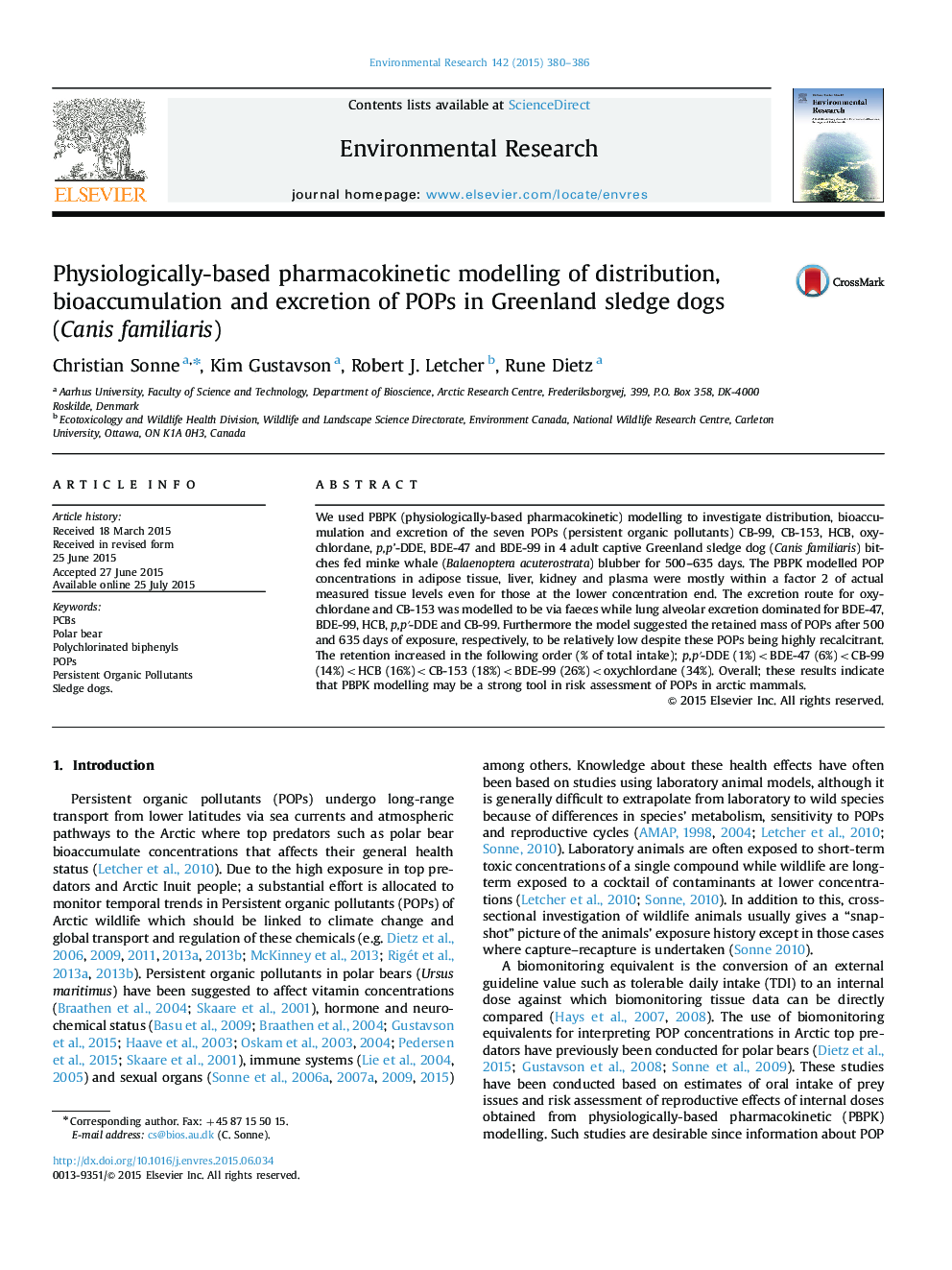| کد مقاله | کد نشریه | سال انتشار | مقاله انگلیسی | نسخه تمام متن |
|---|---|---|---|---|
| 6352395 | 1622559 | 2015 | 7 صفحه PDF | دانلود رایگان |

- We PBPK modelled oral POP dynamics in Greenland dogs.
- Only up to ca. 34% of the POPs was retained in the body.
- CB-153 was the POP estimated to retain to highest degree.
- Modelled main excretion route was faeces and lung alveoli.
- There was agreement between modelled and measured POPs.
We used PBPK (physiologically-based pharmacokinetic) modelling to investigate distribution, bioaccumulation and excretion of the seven POPs (persistent organic pollutants) CB-99, CB-153, HCB, oxychlordane, p,p'-DDE, BDE-47 and BDE-99 in 4 adult captive Greenland sledge dog (Canis familiaris) bitches fed minke whale (Balaenoptera acuterostrata) blubber for 500-635 days. The PBPK modelled POP concentrations in adipose tissue, liver, kidney and plasma were mostly within a factor 2 of actual measured tissue levels even for those at the lower concentration end. The excretion route for oxychlordane and CB-153 was modelled to be via faeces while lung alveolar excretion dominated for BDE-47, BDE-99, HCB, p,pʹ-DDE and CB-99. Furthermore the model suggested the retained mass of POPs after 500 and 635 days of exposure, respectively, to be relatively low despite these POPs being highly recalcitrant. The retention increased in the following order (% of total intake); p,pʹ-DDE (1%)
Journal: Environmental Research - Volume 142, October 2015, Pages 380-386